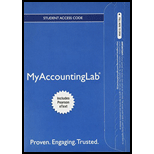
1)
Bonds:
• Bonds long term negotiable instruments of debt issued by corporate entities to secure funds from the public.
• These funds are used to either fund long term capital expenditure or similar long term investment opportunities.
• Bonds represent steady income for the investor in the form of periodic interest payments by the entity issuing the bond. Bonds are issued at par, at premium or at a discount.
•
• These represent the impact of the financial transaction and demonstrate the effect on the accounts impacted in the form of debits and credits.
• Assets and expenses have debit balances and Liabilities and Incomes have credit balances
Carrying amount of the Bonds payable on retirement date.
2)
Bonds:
• Bonds long term negotiable instruments of debt issued by corporate entities to secure funds from the public.
• These funds are used to either fund long term capital expenditure or similar long term investment opportunities.
• Bonds represent steady income for the investor in the form of periodic interest payments by the entity issuing the bond. Bonds are issued at par, at premium or at a discount.
• Journal entries are the first step in recording financial transactions and preparation of financial statements.
• These represent the impact of the financial transaction and demonstrate the effect on the accounts impacted in the form of debits and credits.
• Assets and expenses have debit balances and Liabilities and Incomes have credit balances
Cash to be paid to retire the bonds payable
3):
Bonds:
• Bonds long term negotiable instruments of debt issued by corporate entities to secure funds from the public.
• These funds are used to either fund long term capital expenditure or similar long term investment opportunities.
• Bonds represent steady income for the investor in the form of periodic interest payments by the entity issuing the bond. Bonds are issued at par, at premium or at a discount.
Gain or Loss on Retirement of Bond
Want to see the full answer?
Check out a sample textbook solution
Chapter 14 Solutions
Myaccountinglab With Pearson Etext -- Access Card -- For Horngren's Accounting, The Managerial Chapters
- Hi expert please help me this questionarrow_forwardI need help finding the accurate solution th this general accounting problem with valid methodsarrow_forwardIn 2022, Rolling Mills, a producer of organic oat flour, had the capacity to produce 12,000,000 pounds of product at a conversion cost per pound of $0.18. The conversion cost per pound was $0.14 in 2021 (the previous year). The direct material cost per pound for both years was $0.09 per pound. In 2022, Rolling Mills produced 10,500,000 pounds, while actual production for the previous year was 9,200,000 pounds. What was the cost of unused capacity in 2022?arrow_forward

 AccountingAccountingISBN:9781337272094Author:WARREN, Carl S., Reeve, James M., Duchac, Jonathan E.Publisher:Cengage Learning,
AccountingAccountingISBN:9781337272094Author:WARREN, Carl S., Reeve, James M., Duchac, Jonathan E.Publisher:Cengage Learning, Accounting Information SystemsAccountingISBN:9781337619202Author:Hall, James A.Publisher:Cengage Learning,
Accounting Information SystemsAccountingISBN:9781337619202Author:Hall, James A.Publisher:Cengage Learning, Horngren's Cost Accounting: A Managerial Emphasis...AccountingISBN:9780134475585Author:Srikant M. Datar, Madhav V. RajanPublisher:PEARSON
Horngren's Cost Accounting: A Managerial Emphasis...AccountingISBN:9780134475585Author:Srikant M. Datar, Madhav V. RajanPublisher:PEARSON Intermediate AccountingAccountingISBN:9781259722660Author:J. David Spiceland, Mark W. Nelson, Wayne M ThomasPublisher:McGraw-Hill Education
Intermediate AccountingAccountingISBN:9781259722660Author:J. David Spiceland, Mark W. Nelson, Wayne M ThomasPublisher:McGraw-Hill Education Financial and Managerial AccountingAccountingISBN:9781259726705Author:John J Wild, Ken W. Shaw, Barbara Chiappetta Fundamental Accounting PrinciplesPublisher:McGraw-Hill Education
Financial and Managerial AccountingAccountingISBN:9781259726705Author:John J Wild, Ken W. Shaw, Barbara Chiappetta Fundamental Accounting PrinciplesPublisher:McGraw-Hill Education





